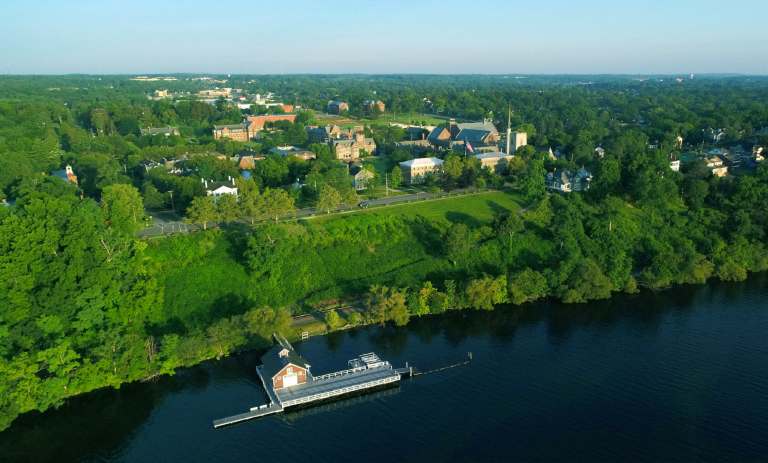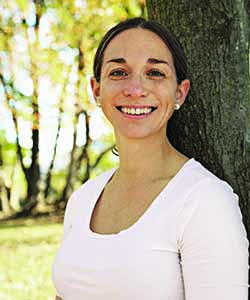
Lives of Consequence
Shannon Phillips Desrosiers ’04

As a research scientist at the Center for Naval Analyses (CNA) -- a federally funded research and development think tank -- Shannon Phillips Desrosiers ’04 uses her background in economics to advise military leadership and influence important policy decisions affecting service-members of the U.S. Navy and Marine Corps.
Desrosiers, who earned her B.A. in economics and mathematics at HWS before pursuing an M.A. and Ph.D. in economics at Boston College, started at CNA in 2011 with little knowledge of military procedures, policies, and operations. This, she says, is part of CNA’s philosophy.
As an organization independent from the military, “CNA likes to have scientists -- in economics, chemistry, physics -- trained to look at problems in their own field and then teach them about the military, to apply their training to military issues and provide unbiased, objective research,” Desrosiers explains.
At CNA, she works on military manpower analysis, most notably on veteran unemployment for the Marine Corps and the Navy, predicting whether separating service-members are at-risk for long unemployment spells.
In an ongoing study for the Navy, she and her colleagues are examining the unemployment prospects for transitioning service-members who earn civilian credentials while in the Navy versus those who did not.
“When many individuals are affected by a policy change, anecdotes bubble to the top and it becomes a topic that can be analyzed in the aggregate, if the appropriate data has been collected,” says Desrosiers. “We analyze the data for emerging patterns that were heard on a smaller scale, and those results inform the policymakers’ decisions.”
In examining the scale at which these patterns occur, Desrosiers looks at many economic indicators -- including annual state unemployment rates and demographic and service-related characteristics -- that can predict whether service-members who recently left the service will collect unemployment benefits.
In a Marine Corps unemployment study, for example, “we created an unemployment calculator, where transition assistance staff input separating service-members’ characteristics, and the output is their probability of collecting unemployment benefits,” she says. “Service-members can see how their unemployment probability varies given different characteristics, such as their choice of state.”
Desrosiers is also scientific analyst for Marine Corps Recruiting Command (MCRC), where she reports directly to the Commanding General of MCRC to provide quick-turn analytical support for their recruiting needs. She recently completed two pieces of analysis for MCRC: one on the allocation of Marine Corps recruiters throughout the country and the other on female pull-ups, assessing a potential change to physical standards for female recruits.
What she enjoys most about the job are the variety of opportunities available to CNA analysts -- whether investigating how a military backed policy will affect the propensity of service-members to remain with the Navy, or participating in military exercises overseas.
“Not only do I get to be the scientific analyst to a Marine Corps command and work with Marines, but I got to participate in a 10-day military exercise, the International Mine Countermeasures Exercise, conducted in the Persian Gulf aboard an amphibious ship. There, colleagues and I analyzed command and control responsibilities and the interoperability of systems across ships,” she says. “Analysts also get an opportunity to take field billets, where they are stationed with and work full-time for a Marine Corps or Navy command for two years, reporting to the commanding officer. These are pretty unique opportunities for civilian researchers.”
However, it’s the impact on individual service-members that drew Desrosiers to this work.
“The work that you do can have a direct effect on policy implementation, which affects people’s lives: that’s the reason that I wanted to go into policy analysis,” she says. “It’s very rewarding.”
